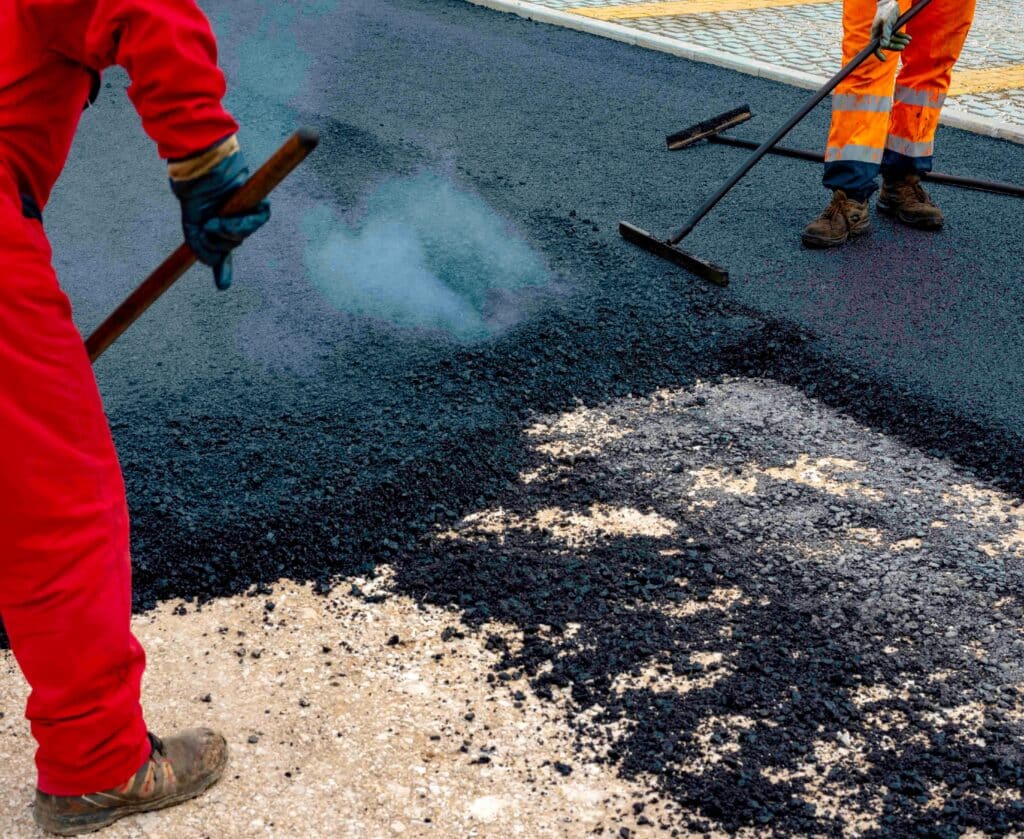Unlocking the Keys of Warm Mix Asphalt Technology
Discovering the midsts of hot mix asphalt modern technology discovers a world where precise procedures and specific solutions merge to form our roads and framework. The combination of fillers, accumulations, and binders isn't simply a building job however a strategic orchestration of sturdiness and performance. As we peer right into the complex dance of components, a tapestry of durability and sustainability unfolds. What exists beneath this surface of asphaltic proficiency, and what tricks wait to be introduced in the world of paving advancements?
Value of Hot Mix Asphalt
Hot Mix Asphalt plays an essential function in contemporary facilities growth due to its longevity and cost-effectiveness. As the most typically used paving material for roads, highways, and auto parking great deals, Warm Mix Asphalt uses a variety of advantages that contribute to its significance in construction projects.
The longevity of Warm Mix Asphalt comes from its make-up, that includes aggregates, binder, and filler products that are meticulously picked and blended to fulfill specific performance requirements. This specific mix causes a strong and versatile sidewalk that can withstand regular usage without substantial wear and tear. Warm Mix Asphalt is 100% recyclable, additional boosting its sustainability and environmental advantages. On the whole, the value of Warm Mix Asphalt in infrastructure growth can not be underrated, as it proceeds to be a foundation of modern construction techniques.
Parts of Asphalt Mixes
The make-up of asphalt blends includes very carefully selected aggregates, binder, and filler materials that are critical for achieving certain performance needs. Accumulations are the main element of asphalt blends, supplying toughness and security. These aggregates can be all-natural, such as crushed rock or smashed stone, or artificial, like recycled materials from old pavements. The binder, typically bitumen or asphalt concrete, holds the aggregates together and provides adaptability and sturdiness to the mix. The choice of the binder is important as it directly affects the mix's performance in various climate condition. Fillers, such as moisturized lime or Rose city concrete, are utilized to boost the mix's workability and aging resistance. Angled Parking.
The mix and percentage of these elements play a significant role in figuring out the top quality and performance of the asphalt mix. Engineers meticulously develop the mix to fulfill particular needs, considering factors like traffic quantity, climate problems, and pavement life-span. Correct selection and balancing of accumulations, binder, and fillers are necessary for producing durable, durable asphalt sidewalks.
Mixing and Production Strategies

As soon as the accumulations are picked, the binder, frequently asphalt concrete, is included to bind the products with each other. The binder's high quality and quantity significantly affect the mix's versatility, resistance, and toughness to ecological elements. In addition, fillers like hydrated lime or Rose city concrete might be incorporated to enhance details features of the asphalt mix, such as its workability or moisture resistance.
During manufacturing, the aggregates and binder are heated up, generally between 250-325 ° F(121-163 ° C ), to assist in blending and make certain appropriate layer of the aggregates. The mixing procedure needs to be thorough to attain a homogeneous mix that advertises the desired efficiency characteristics of the asphalt. Various methods, such as set blending or drum mixing, are used to accomplish high-grade and regular asphalt mixes for building and construction projects.
Factors Impacting Asphalt Performance
Elements influencing asphalt performance incorporate a variety of variables that affect the toughness, longevity, and overall high quality of asphalt sidewalks. One vital aspect is the top quality of commercial parking lot paving products used in the asphalt mix. The kind and source of accumulations, the binder high quality, and the additives all play a substantial duty in identifying the efficiency of the asphalt pavement. The gradation of accumulations is essential as it influences the mix's resistance, stability, and workability to rutting and splitting.

Environmental problems also affect asphalt performance. Temperature variations, moisture infiltration, and traffic lots can all influence the architectural integrity of the sidewalk. Style considerations, such as pavement thickness and drainage, are important in ensuring the long-lasting efficiency of the asphalt sidewalk. By meticulously taking into consideration these specialists, engineers and variables can maximize asphalt performance and improve the solution life of sidewalks.
Lasting Practices in Asphalt Technology

WMA allows for the manufacturing and placement of asphalt mixes at lower temperature levels compared to standard hot-mix asphalt, resulting in decreased energy intake and greenhouse gas exhausts. The usage of porous asphalt mixes can help reduce stormwater drainage concerns by allowing water to infiltrate with the sidewalk and into the ground, advertising all-natural water filtering and charge processes.
Conclusion
To conclude, warm mix asphalt technology plays a vital role in modern-day facilities development as a result of its durability and cost-effectiveness. By meticulously balancing components, using correct blending methods, and thinking about numerous variables, engineers can produce top notch asphalt mixes that endure hefty web traffic loads and severe climate condition. Welcoming sustainable methods, such as using recycled products and warm-mix modern technologies, additionally improves the ecological kindness of asphalt modern technology.
Mixing and production techniques in hot mix asphalt innovation involve the accurate mix and processing of accumulations, binder, and fillers to produce a sturdy and high-performance asphalt mix.Factors influencing asphalt efficiency encompass an array of variables that influence the sturdiness, long life, and overall high quality of asphalt sidewalks. Sustainable techniques in asphalt modern technology incorporate different initiatives aimed at reducing the environmental impact of asphalt manufacturing and paving procedures. By incorporating reclaimed asphalt pavement (RAP) and recycled asphalt roof shingles (RAS) into new asphalt mixes, the market can significantly minimize the intake of raw materials and power, while additionally lowering land fill waste.
WMA allows for the production and positioning of asphalt mixes at reduced temperature levels contrasted to typical hot-mix asphalt, resulting in reduced energy usage and greenhouse gas emissions.